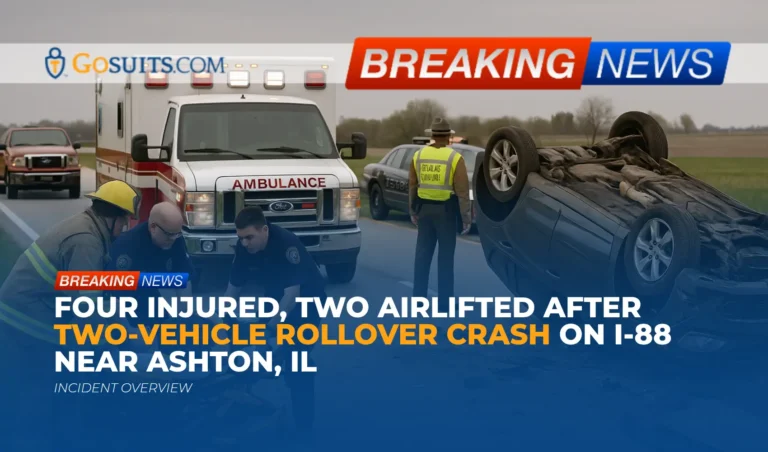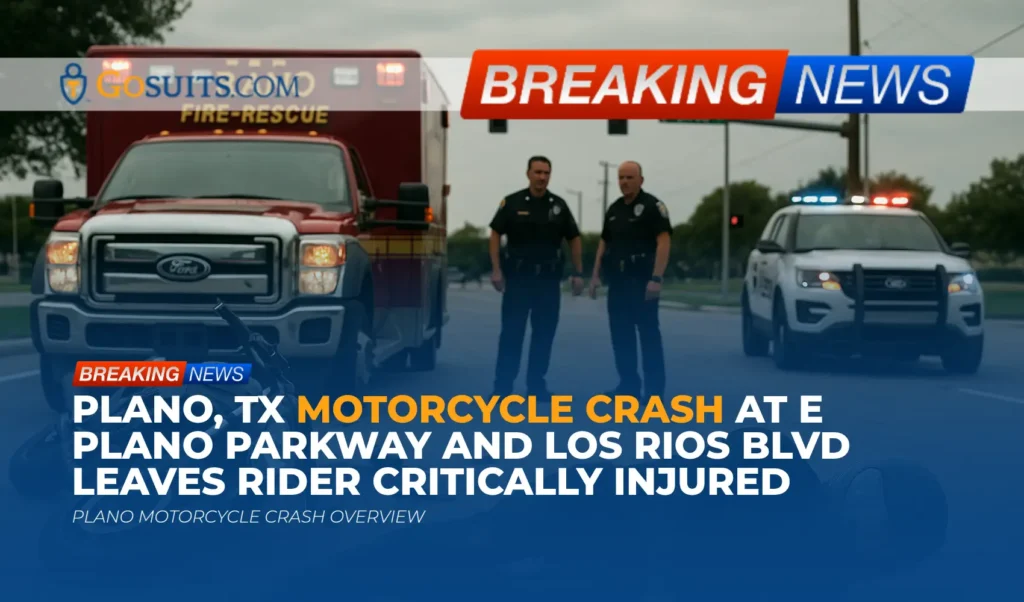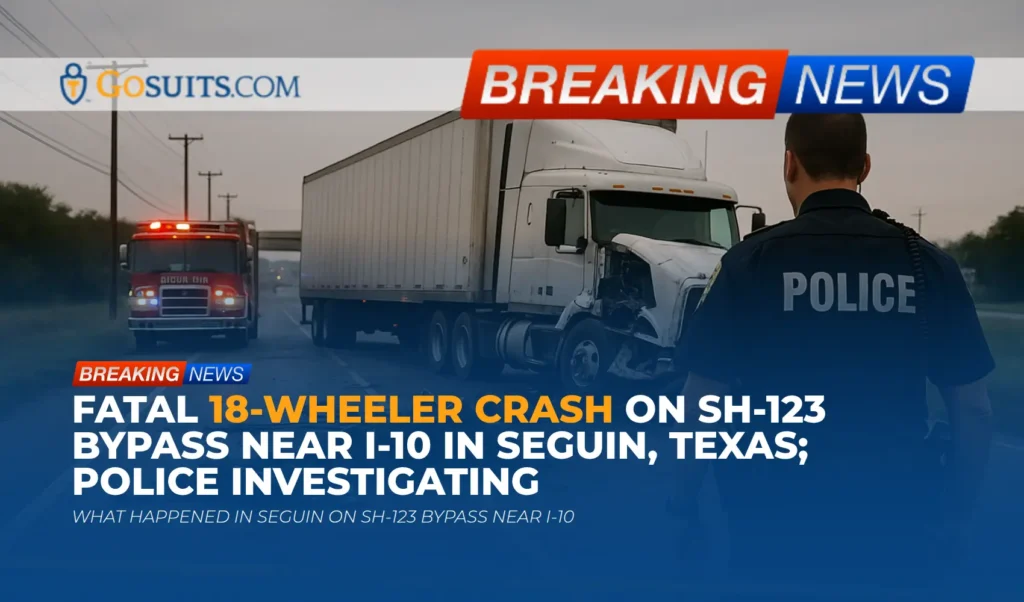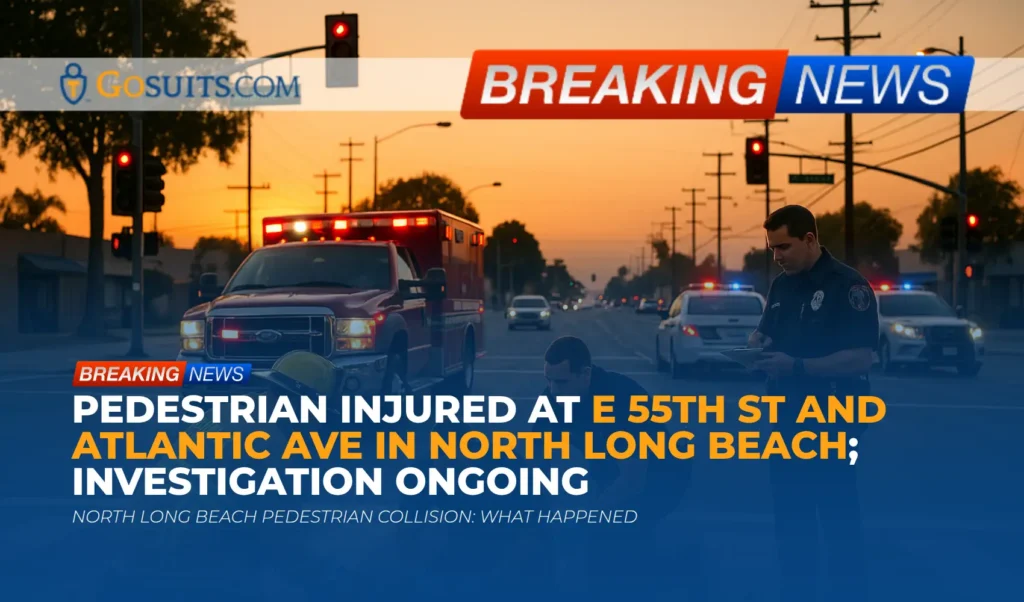- Incident overview
- What we know so far from officials
- Safety and medical response context
- Common causes of interstate rollover collisions
- Rights and options for injured people after an Illinois highway crash
- Insurance considerations in Illinois
- Preserving evidence and documenting the crash
- How to obtain official records and where to call for help
- Steps to consider before speaking with any insurance company
- Potential liability in two-vehicle highway collisions
- Data and safety insights relevant to Interstate 88 travel
- What families can do in the first days after a serious crash
- Commentary from Gosuits Ashton, Illinois Personal Injury Attorney
- Educational call to action: why acting promptly can make a difference
Incident overview
According to preliminary information reported by Illinois State Police, a two-vehicle collision occurred on Interstate 88 near Ashton in Lee County, Illinois, at approximately 9:20 a.m. on a Monday morning. The crash happened around milepost 71. The impact caused one of the vehicles to roll over. Four people were injured. Two individuals sustained severe injuries and were airlifted to a hospital for treatment, while two others were reported to have minor injuries. Additional details have not yet been released, and the investigation is ongoing.
At this stage, official statements are limited. Investigators typically gather scene evidence, vehicle data, and witness accounts to understand the sequence of events, contributing factors, and potential responsibility.
What we know so far from officials
Illinois State Police responded to the crash on I-88 near Ashton. As is standard in serious highway collisions, troopers secure the scene, coordinate emergency medical response, document roadway evidence, and arrange for traffic control. When rollovers and severe injuries are involved, crash reconstruction procedures may be used to analyze vehicle dynamics, speed estimates, lane positions, and pre-impact maneuvers.
Because the crash remains under investigation, information such as fault determination, citations, or detailed causation analysis is not yet publicly available. This is common in the first days after a significant incident. Updated details, including a police crash report, are usually released when evidence review is complete.
Safety and medical response context
Two people were airlifted from the scene. Air medical transport is often used when a patient’s condition meets trauma criteria and rapid transport to a higher level of care can improve outcomes. National trauma triage guidance recognizes that certain mechanisms of injury, such as high-speed crashes and rollovers with suspected serious injury, may warrant transport to a trauma center, sometimes by helicopter if ground transport would be delayed or prolonged. The Centers for Disease Control and Prevention provide an overview of field triage principles for EMS decision-making about destination and transport mode. See general guidance at the CDC’s Field Triage site: CDC Field Triage Resources.
Rollover crashes are particularly dangerous because they can involve roof crush, ejection risk, and multiple points of impact. Safety measures like seat belt use markedly reduce the risk of severe outcomes. The National Highway Traffic Safety Administration notes that seat belts are one of the most effective countermeasures for serious crash injury and death. For background on seat belt effectiveness and risk reduction, see NHTSA’s overview: NHTSA Seat Belts.
Common causes of interstate rollover collisions
While the precise cause of this incident has not been released, research identifies several factors often associated with rollovers on high-speed roads like interstates:
- Sudden steering inputs
- Quick lane changes or overcorrection can destabilize a vehicle, particularly at highway speeds.
- Excessive speed
- Higher speed increases the force of impact and the likelihood that a vehicle may trip and roll when it leaves the roadway or strikes a curb or soft shoulder.
- Vehicle tripping mechanisms
- Contact with a guardrail, median feature, soft shoulder, or another vehicle can lead to a roll sequence.
- Vehicle type and load
- Top-heavy vehicles or those with high centers of gravity are more prone to rollovers, especially if cargo shifts abruptly.
- Adverse conditions
- Weather, low visibility, or roadway surface issues can contribute to loss of control events.
NHTSA provides guidance and data related to rollover risk factors and outcomes in its road safety materials. For general background, see: NHTSA Rollover Safety.
Rights and options for injured people after an Illinois highway crash
In Illinois, individuals injured by another driver’s negligence may have civil claims for damages such as medical expenses, lost income, and pain and suffering. The specifics depend on the facts and the applicable insurance coverages. A few key Illinois legal principles commonly considered in highway collisions include:
- Comparative fault framework
- Illinois uses a modified comparative negligence system. A claimant’s compensation can be reduced by their percentage of fault, and recovery is barred if the claimant is more than 50 percent at fault. See 735 ILCS 5/2-1116 at the Illinois General Assembly site: 735 ILCS 5/2-1116.
- General time limits
- Many personal injury actions in Illinois must be filed within two years of the injury, subject to limited exceptions. See 735 ILCS 5/13-202: 735 ILCS 5/13-202. It is important to review deadlines early because different rules may apply in certain circumstances, including claims involving public entities.
- Wrongful death and survival claims
- In fatal cases, Illinois law provides separate paths for claims related to the decedent and surviving family members. See the Wrongful Death Act (740 ILCS 180) and Survival Act (755 ILCS 5/27-6): 740 ILCS 180 and 755 ILCS 5/27-6.
These references are shared for general educational context. The most helpful next step for many families after a serious crash is to consult with a seasoned and skilled attorney who can evaluate the facts, protect rights, and coordinate essential evidence preservation.
Insurance considerations in Illinois
Insurance is central to most crash claims. Illinois requires vehicle owners to carry minimum liability coverage, and uninsured motorist bodily injury coverage is also required at certain minimum limits. The Illinois Secretary of State provides an overview of required coverages and compliance responsibilities. See: Illinois Mandatory Insurance Law.
Key points to understand:
- Liability insurance
- Helps pay for injuries and property damage that a driver causes to others, up to the policy limits.
- Uninsured and underinsured motorist coverage
- May help if an at-fault driver has no insurance or not enough insurance. These coverages are governed by policy language and Illinois law.
- Medical payments coverage
- Optional in many policies. Can help with immediate medical bills regardless of fault, subject to the coverage amount.
- Commercial policies
- If a driver was on the job, commercial or employer policies may be involved. Determining which policy applies often requires careful review.
It is easy to underestimate the complexity of multi-policy claims. Early guidance can help avoid pitfalls, especially before giving statements to any insurer.
Preserving evidence and documenting the crash
Evidence can fade quickly after a highway collision. Taking prompt steps to preserve information can be critical in later claim evaluation. Consider the following:
- Request police crash reports when available
- These reports capture key scene details. See the Illinois State Police crash report portal referenced below.
- Photographs and video
- Scene photos, dashcam footage, and images of vehicle damage and injuries can assist reconstruction and medical causation analysis.
- Witness information
- Names and contact information of witnesses can be essential.
- Vehicle inspection and data
- Modern vehicles often store crash-related information in event data recorders. Preservation letters are sometimes used to prevent premature repair or disposal that could compromise evidence.
- Medical records and billing
- Organize emergency, hospital, and follow-up records. Keep all bills and explanation-of-benefits statements.
When injuries are severe, a coordinated approach to evidence preservation can make a meaningful difference in understanding what happened and who may be responsible.
How to obtain official records and where to call for help
Illinois State Police crash report
The Illinois State Police provide a public portal where eligible parties can obtain crash reports. Availability depends on investigative status and the type of report. For more information or to purchase a report when it is ready, see: Illinois State Police Crash Reports.
In serious crashes, a supplemental or reconstruction report may be prepared. These materials can take longer to finalize. If a report is not yet available through the portal, check back periodically or contact the listed report provider for guidance.
Illinois State Police district information
Interstate 88 in Lee County is generally within an Illinois State Police patrol district that covers the area. District pages provide contact details and public information resources. For district contacts, start here: Illinois State Police Patrol Districts.

Lee County resources
Local government offices may assist with records or referrals, especially if local responders assisted at the scene. The county’s website provides department directories and contact information. See: Lee County, Illinois.
Coroner or medical examiner information (only if applicable)
This incident did not report any fatalities. If a crash involves a death, the county coroner typically manages death investigation records, including autopsy and toxicology reports when performed. Requests for such records often follow local procedures and may be subject to Illinois Freedom of Information Act rules. For state FOIA guidance, see: Illinois FOIA, and for local contacts visit the county’s main site: Lee County, Illinois.
Medical records and billing
Individuals have a right to access their health information from hospitals and providers, with limited exceptions. The U.S. Department of Health and Human Services provides an overview of access rights and timelines: HHS: Access to Medical Records.
IDOT and roadway information
For general information about Illinois highways and infrastructure responsibilities, the Illinois Department of Transportation provides resources: Illinois Department of Transportation. If a claim may involve roadway design or maintenance issues, specialized procedures and protections can apply. Investigation in such situations often requires technical review.
Steps to consider before speaking with any insurance company
After a serious crash, insurers commonly reach out quickly for statements. It is important to understand that statements can be used later in claim evaluation. Before making any recorded statement or signing any forms:
- Consider consulting an attorney first
- A consultation can help clarify rights, obligations, and how to avoid harming a potential claim.
- Be cautious with broad medical authorizations
- Some forms may allow access to unrelated medical history. Understand what you are authorizing.
- Do not guess or speculate
- If you do speak, stick to facts you know and avoid estimating speeds or distances without certainty.
Insurance negotiations often turn on fine details, including policy language and documented injuries. An early, informed approach can support a clearer path forward.
Potential liability in two-vehicle highway collisions
Two-vehicle crashes on interstates can involve a range of negligence theories depending on the evidence. Without speculating about this specific crash, here are common civil issues that attorneys evaluate in similar scenarios:
- Failure to maintain lane or improper lane change
- Crossing lane lines or unsafe merges can lead to sideswipe or loss-of-control events.
- Following too closely
- Insufficient following distance reduces reaction time and can trigger chain-reaction or avoidance maneuvers.
- Speeding or driving too fast for conditions
- Excessive speed increases crash severity and stopping distances.
- Distracted driving
- Device use and in-cab distractions are recurrent factors in modern crash investigations.
- Vehicle condition and cargo securement
- Tire failures, braking issues, and unsecured loads can contribute to loss of control.
- Comparative negligence analysis
- Fact-finders may assign percentages of fault among involved parties under Illinois law. See 735 ILCS 5/2-1116: 735 ILCS 5/2-1116.
- Public entity considerations
- Claims involving roadway design, signage, or maintenance can raise issues under the Local Governmental and Governmental Employees Tort Immunity Act. See 745 ILCS 10: 745 ILCS 10.
Every case turns on its facts. Thorough investigation, professional analysis, and careful review of records guide fair outcomes.
Data and safety insights relevant to Interstate 88 travel
Highway travel combines higher speeds with close vehicle spacing, especially during morning hours. Research-based safety insights are helpful context:
- Seat belt effectiveness
- NHTSA emphasizes that seat belts significantly reduce the risk of fatal injury in passenger vehicles. See: NHTSA Seat Belts.
- Rollover risk factors
- Rollover crashes are strongly associated with tripping events and high speeds. See NHTSA’s rollover resources: NHTSA Rollover Safety.
- Trauma triage and transport
- For severe injuries, EMS may use helicopter transport to reach appropriate trauma centers more quickly when ground transport is not optimal. Overview: CDC Field Triage Resources.
Illinois agencies periodically publish statewide crash facts and safety trends. For general information about transportation safety programs and publications, refer to the Illinois Department of Transportation: IDOT.
What families can do in the first days after a serious crash
The first days after a serious interstate crash are overwhelming. Medical needs come first. Beyond immediate care, a few practical steps can help protect health and preserve information.
- Prioritize medical follow-up
- Attend all appointments and follow discharge instructions. Document symptoms and limitations.
- Collect and organize records
- Keep copies of hospital records, imaging reports, prescriptions, work absence notes, and billing statements.
- Preserve digital evidence
- Save phone photos, dashcam files, and relevant messages or emails. Back up files to secure storage.
- Note witnesses and timelines
- Write down names, contact information, and what each person observed while memories are fresh.
- Hold vehicles and parts
- If possible, avoid early disposal or repair before documentation. Important evidence can be lost if a vehicle is released too soon.
- Consider early legal guidance
- An initial consultation can help identify key steps, including preservation letters and coordinated records requests.
Practical, steady steps can bring order to a difficult situation and ensure important information is not lost.

Commentary from Gosuits Ashton, Illinois Personal Injury Attorney
We extend our sincere concern to everyone affected by the crash on I-88 near Ashton. Reports indicate two people suffered severe injuries and required air transport, with two others sustaining minor injuries. Situations like this are painful for families and communities. This commentary is offered for educational and general informational purposes only.
Based on what is publicly known, investigators will focus on how two vehicles came into conflict at highway speed and why one vehicle rolled. In cases like this, careful scene documentation, vehicle inspections, and review of available video or event data can illuminate the sequence of events. Our view, shaped by handling many serious highway collisions, is that early evidence preservation often matters as much as any single witness statement. Skid marks fade, vehicles get repaired, and memories change with time.
Insurance companies and corporate defendants may move quickly to frame the narrative and collect statements. It is not unusual for adjusters to request recorded statements soon after the crash or ask for broad medical authorizations. People dealing with pain, bills, and uncertainty may feel pressured to agree. What is said early can be used later, sometimes in ways that are not obvious at the time.
An informed, no-cost consultation can provide clarity about rights, timelines, and practical next steps, including how to obtain police reports, medical records, and other documents. It can also help families avoid common pitfalls, such as signing forms that allow access to unrelated medical history or releasing a vehicle before it is fully documented. Speaking with a seasoned and skilled attorney before talking to any insurer can help ensure that important details are protected and that claims are accurately presented.
Educational call to action: why acting promptly can make a difference
What should be done next, and why sooner is often better:
- Secure official records promptly
- Obtain the Illinois State Police crash report as soon as it is available. The sooner a report is reviewed, the sooner gaps can be identified and addressed with supplemental evidence. Waiting can make it harder to track down witnesses or scene media.
- Preserve vehicles and digital data
- Request that vehicles involved are held until they can be inspected and photographed. Dashcam or EDR data can be overwritten or lost. Early preservation often safeguards critical facts about speed, braking, and steering.
- Coordinate medical documentation
- Ensure that all injuries, symptoms, and referrals are documented in the medical record. Clear, contemporaneous medical documentation helps avoid disputes later about causation and the extent of harm.
- Review insurance coverage before giving statements
- Determine all potentially applicable policies and coverages before making recorded statements. Knowing the coverage landscape helps prevent missteps that can limit available recovery.
- Consult early for guidance
- A timely consultation can clarify strategy, preserve rights under Illinois deadlines, and align next steps with the investigation timeline. Early action often reduces stress and confusion during a challenging period.
When lives are disrupted by a severe interstate crash, structured action taken early often makes later decisions more manageable. Acting now helps ensure that important evidence is secured, that communications with insurers are thoughtful, and that medical recovery remains the central focus.
Trusted government and academic resources referenced above
- Illinois State Police Crash Reports
- Illinois State Police Patrol Districts
- Illinois Freedom of Information Act
- Illinois Secretary of State: Mandatory Insurance
- 735 ILCS 5/2-1116 (Comparative Fault)
- 735 ILCS 5/13-202 (Limitations)
- 740 ILCS 180 (Wrongful Death)
- 755 ILCS 5/27-6 (Survival Act)
- 745 ILCS 10 (Tort Immunity Act)
- Illinois Department of Transportation
- CDC Field Triage Resources
- HHS: Access to Medical Records
- NHTSA: Rollover Safety
- NHTSA: Seat Belts
- Lee County, Illinois






